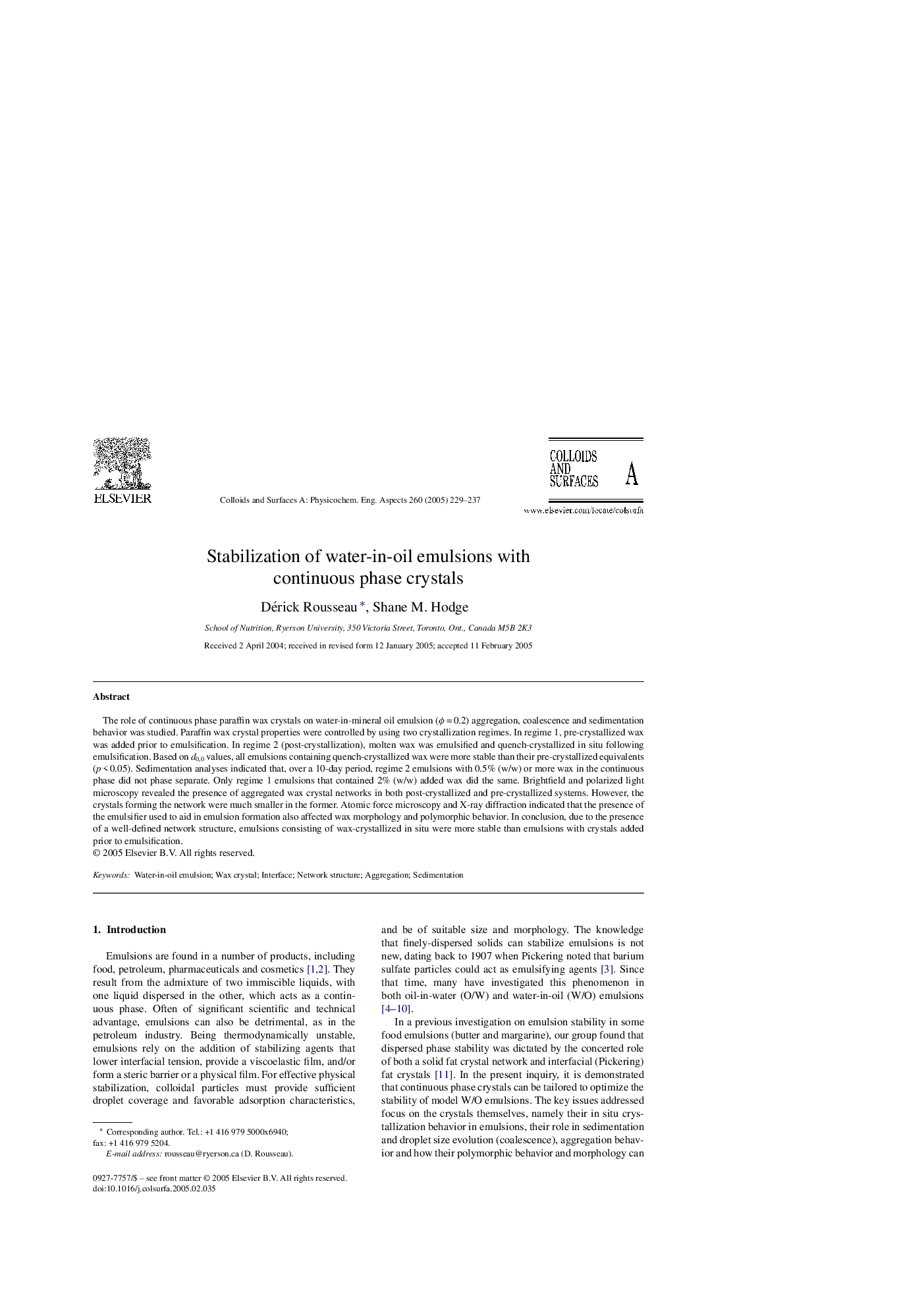| Article ID | Journal | Published Year | Pages | File Type |
|---|---|---|---|---|
| 9675888 | Colloids and Surfaces A: Physicochemical and Engineering Aspects | 2005 | 9 Pages |
Abstract
The role of continuous phase paraffin wax crystals on water-in-mineral oil emulsion (Ï = 0.2) aggregation, coalescence and sedimentation behavior was studied. Paraffin wax crystal properties were controlled by using two crystallization regimes. In regime 1, pre-crystallized wax was added prior to emulsification. In regime 2 (post-crystallization), molten wax was emulsified and quench-crystallized in situ following emulsification. Based on d0,0 values, all emulsions containing quench-crystallized wax were more stable than their pre-crystallized equivalents (p < 0.05). Sedimentation analyses indicated that, over a 10-day period, regime 2 emulsions with 0.5% (w/w) or more wax in the continuous phase did not phase separate. Only regime 1 emulsions that contained 2% (w/w) added wax did the same. Brightfield and polarized light microscopy revealed the presence of aggregated wax crystal networks in both post-crystallized and pre-crystallized systems. However, the crystals forming the network were much smaller in the former. Atomic force microscopy and X-ray diffraction indicated that the presence of the emulsifier used to aid in emulsion formation also affected wax morphology and polymorphic behavior. In conclusion, due to the presence of a well-defined network structure, emulsions consisting of wax-crystallized in situ were more stable than emulsions with crystals added prior to emulsification.
Related Topics
Physical Sciences and Engineering
Chemical Engineering
Colloid and Surface Chemistry
Authors
Dérick Rousseau, Shane M. Hodge,
